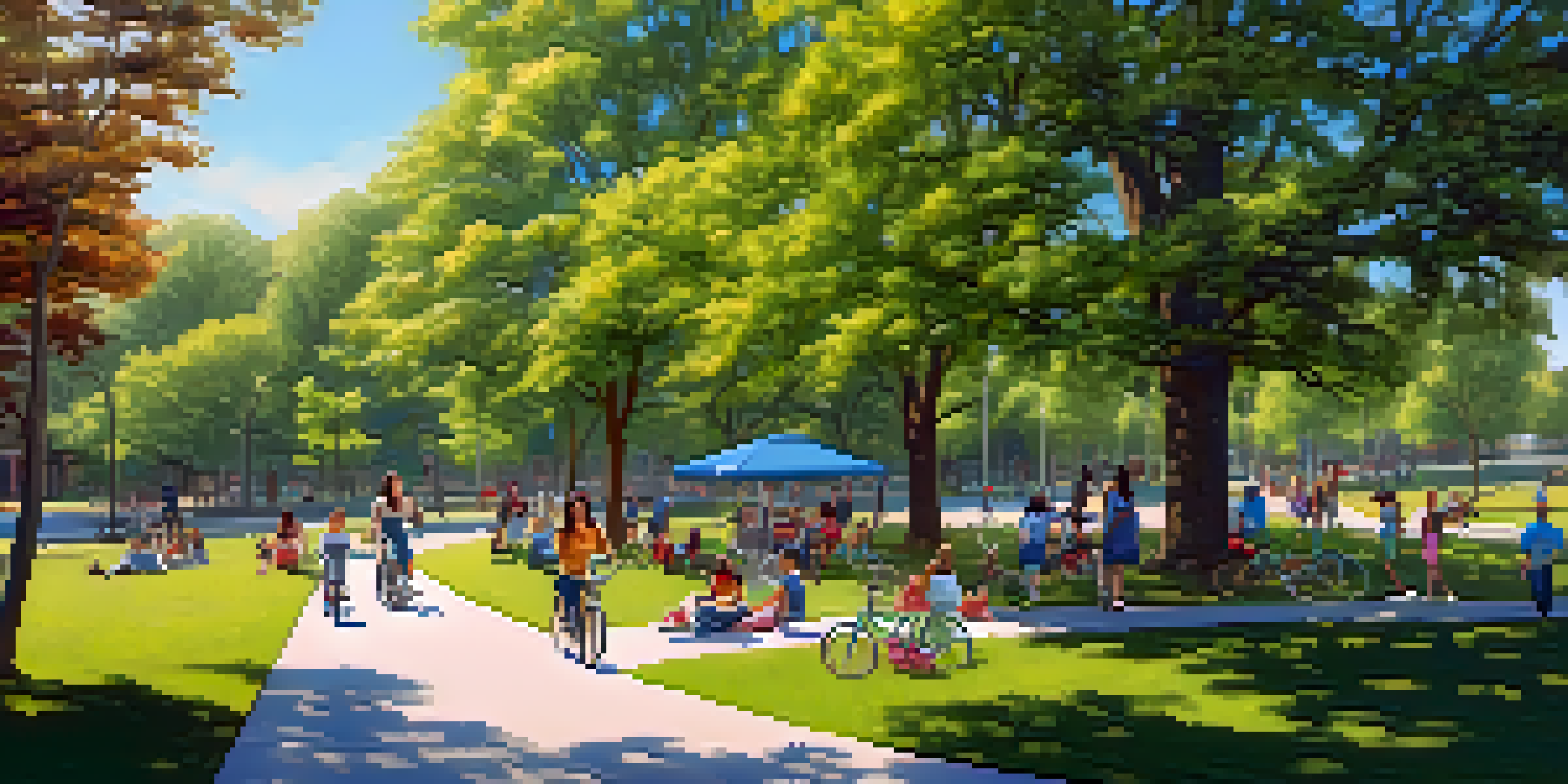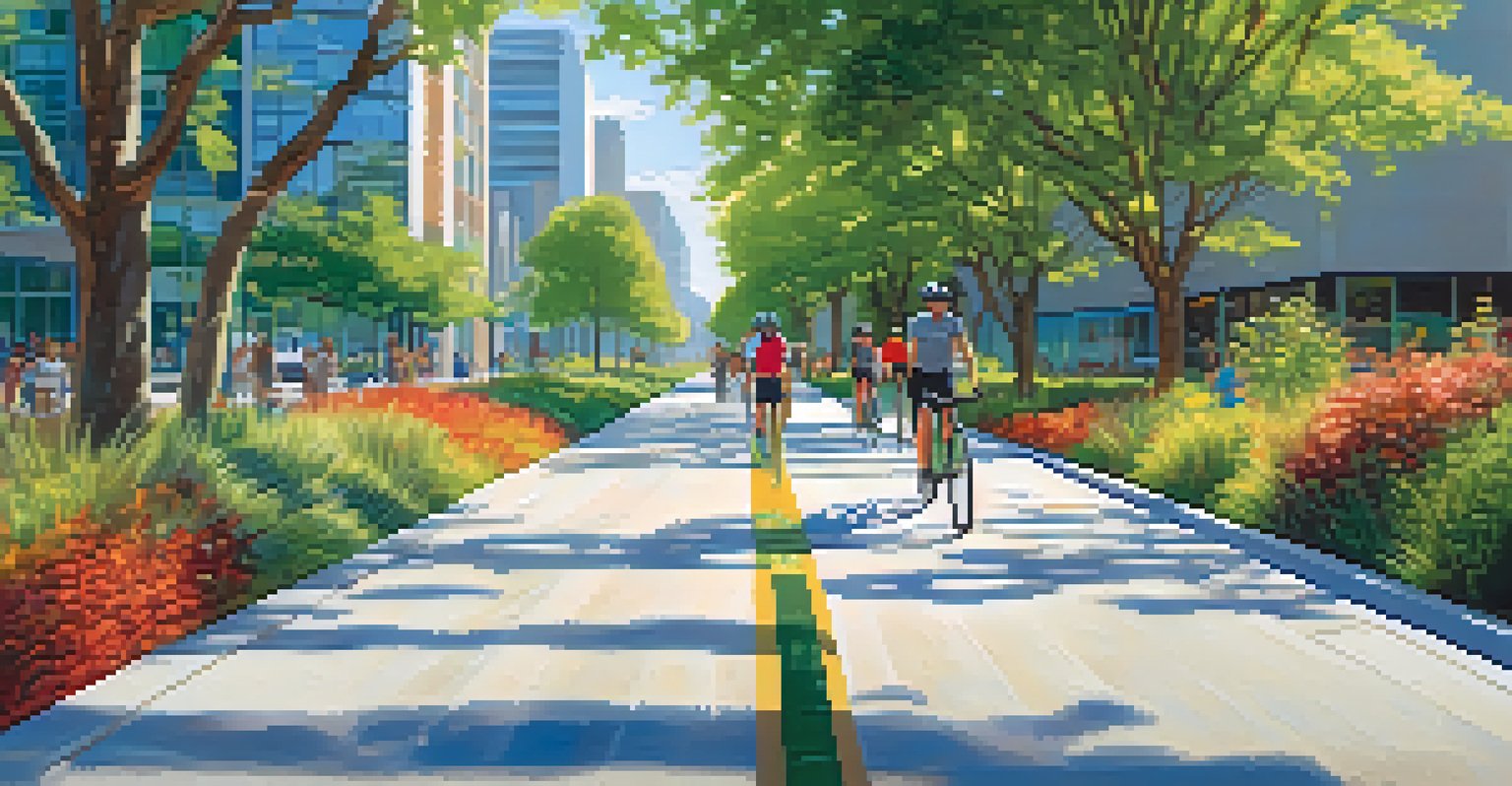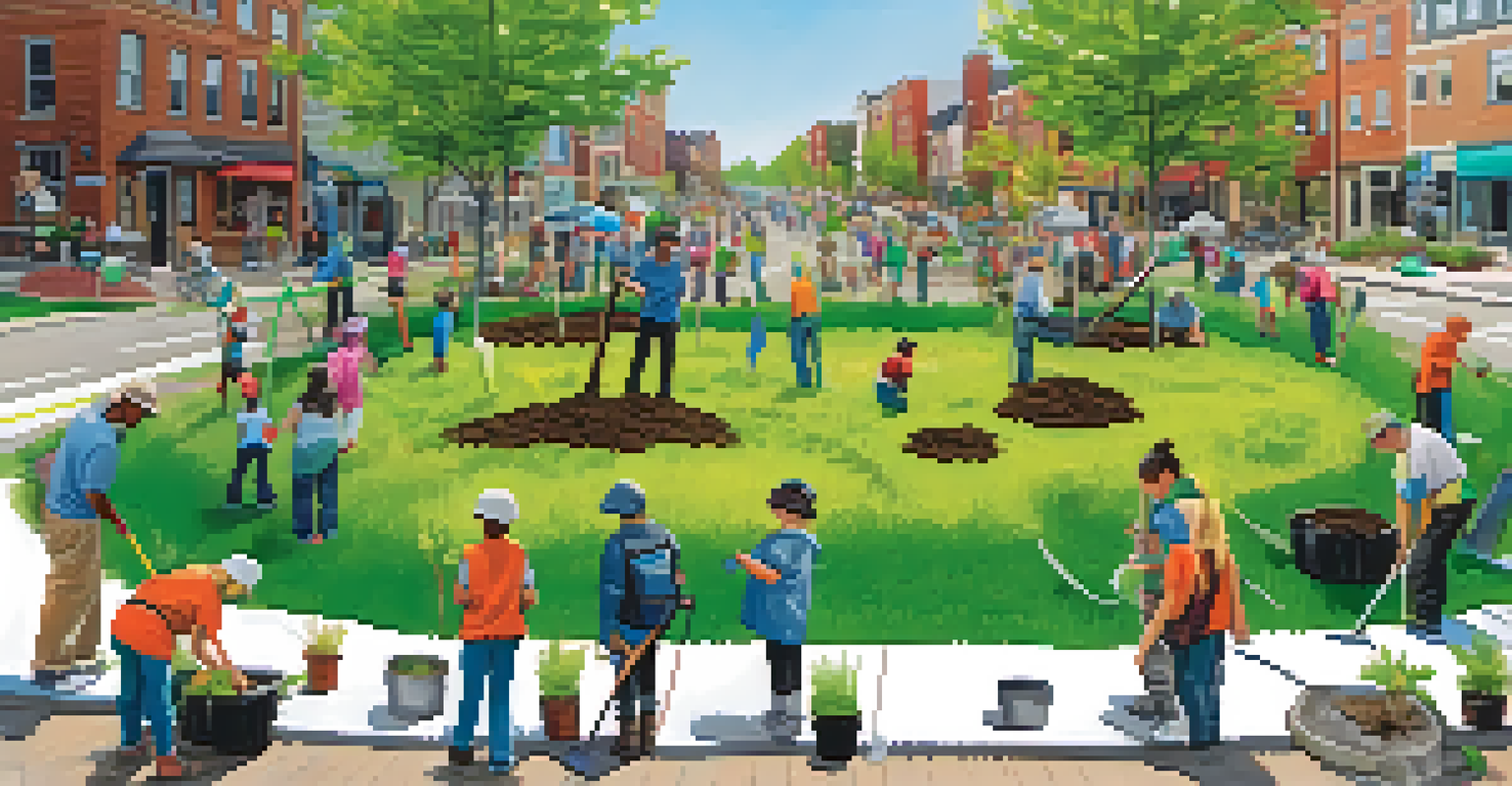Green Infrastructure: Supporting Sustainable Transport in Austin

Understanding Green Infrastructure in Urban Settings
Green infrastructure refers to the network of natural and semi-natural systems that provide environmental benefits. This includes parks, green roofs, and permeable pavements, which help manage stormwater, improve air quality, and enhance biodiversity. In urban areas like Austin, integrating green infrastructure is essential for creating resilient cities that can adapt to climate change.
We won't have a society if we destroy the environment.
For example, when rainwater is absorbed by green spaces, it reduces runoff and lessens the burden on drainage systems. This not only mitigates flooding but also helps maintain cleaner water sources. By incorporating trees and plants into urban design, cities can also improve the overall quality of life for residents, making neighborhoods more inviting and livable.
In Austin, the push for green infrastructure aligns with the city's goals of sustainability and environmental stewardship. As the city continues to grow, the integration of green spaces into transportation planning becomes increasingly important for enhancing urban resilience.
The Role of Green Infrastructure in Sustainable Transport
Sustainable transport focuses on reducing environmental impact while promoting accessibility and mobility. Green infrastructure plays a vital role in this by providing safe, appealing routes for walking and cycling. By prioritizing green corridors, cities can encourage residents to choose eco-friendly transportation modes instead of relying solely on cars.

For instance, Austin's numerous bike lanes and pedestrian paths often feature shaded areas, making them more comfortable during the hot summer months. These green routes not only foster a healthier lifestyle but also help reduce traffic congestion and lower emissions. By creating an inviting atmosphere for active transport, cities can transform the way people move around.
Green Infrastructure Enhances Cities
Integrating parks and green spaces improves urban resilience, air quality, and community well-being.
Moreover, integrating green infrastructure into transport planning can enhance connectivity between different neighborhoods, making it easier for residents to access essential services. This approach not only promotes sustainability but also strengthens community ties, as people are more likely to engage with their surroundings when walking or cycling.
Benefits of Urban Green Spaces for Transport Systems
Urban green spaces provide a multitude of benefits that extend beyond aesthetics. They contribute to improved air quality, which is crucial for public health, especially in densely populated areas. By planting trees along transport routes, cities can filter pollutants and create a cleaner environment for all.
The greatest threat to our planet is the belief that someone else will save it.
Additionally, green spaces can reduce the urban heat island effect, making cities cooler and more pleasant during hot weather. This can encourage more people to walk or bike, as they are more likely to choose these options when temperatures are moderate. In Austin, the city's commitment to greenery helps create a more enjoyable experience for commuters.
Furthermore, integrating parks and gardens into transport systems can enhance biodiversity and support local wildlife. This not only enriches the urban ecosystem but also fosters a sense of community pride as residents engage with and care for their local environment, ultimately leading to a more vibrant city.
Case Studies: Successful Green Infrastructure Projects
Several cities around the world have successfully implemented green infrastructure to support sustainable transport. For instance, Portland, Oregon, is renowned for its green streets that integrate stormwater management and enhance walkability. These streets often feature bioswales, which are designed to absorb rainwater while providing a lush landscape.
Austin is also making strides with projects like the Southern Walnut Creek Trail, which connects neighborhoods while showcasing native plants and trees. This trail not only provides a safe route for cyclists and pedestrians but also educates users about local ecosystems. Such initiatives demonstrate how integrating green infrastructure can elevate transportation options.
Sustainable Transport Benefits
Green infrastructure fosters walking and cycling, reducing traffic congestion and promoting eco-friendly transportation.
By learning from these case studies, Austin can continue to refine its approach to sustainable transport. Emphasizing the importance of green infrastructure ensures that the city remains a leader in environmental innovation while fostering a healthier, more connected community.
Community Involvement in Green Infrastructure Development
Community involvement is paramount in the successful implementation of green infrastructure. When residents participate in the planning process, they can voice their needs and preferences, leading to solutions that truly benefit the community. Workshops, surveys, and public meetings can help gather valuable input and foster a sense of ownership among residents.
Involving the community in greening initiatives also encourages stewardship, as residents may be more inclined to care for and maintain these spaces. For example, neighborhood groups can organize clean-up days or tree-planting events, which not only enhance the landscape but also strengthen community bonds. This collaborative approach to urban development creates a sense of pride and responsibility.
Austin has made strides in engaging the community through initiatives like the Austin Parks Foundation, which encourages residents to support and enhance public green spaces. By prioritizing community involvement, the city can ensure that green infrastructure projects are both effective and reflective of the community's values.
Challenges and Solutions in Green Infrastructure Adoption
While the benefits of green infrastructure are clear, several challenges can arise during its implementation. Budget constraints, competing priorities, and lack of awareness can hinder progress. To overcome these obstacles, cities must prioritize education and advocacy, highlighting the long-term advantages of green infrastructure for both the environment and the community.
For instance, demonstrating cost savings from reduced stormwater management expenses can make a compelling case for investing in green infrastructure. Additionally, forming partnerships with nonprofits and local businesses can help secure funding and resources for projects. By collaborating with various stakeholders, cities can leverage diverse expertise and support.
Community Engagement is Key
Involving residents in the planning and maintenance of green infrastructure fosters a sense of ownership and pride.
Austin can also look to innovative financing models, such as green bonds or public-private partnerships, to fund green infrastructure projects. By thinking creatively about funding sources and mobilizing community support, cities can navigate challenges and make meaningful progress toward sustainable transport.
The Future of Sustainable Transport in Austin
The future of sustainable transport in Austin hinges on the continued integration of green infrastructure. As the city grows, innovative approaches will be necessary to accommodate increasing transportation demands while prioritizing environmental health. By embracing green initiatives, Austin can lead the way in creating a resilient and sustainable urban landscape.
Looking ahead, advancements in technology and design will further enhance green infrastructure efforts. Smart city concepts, such as utilizing data to optimize traffic flow and improve public transit, will complement natural systems. By combining these strategies, Austin can create a seamless and efficient transportation network that prioritizes both people and the planet.

Ultimately, the vision for Austin's future involves a harmonious balance between urban development and environmental sustainability. By prioritizing green infrastructure in transport planning, the city can ensure a healthier, more vibrant community for generations to come.